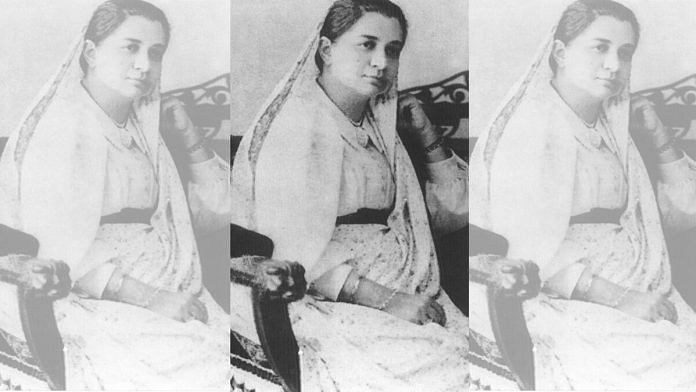More than a century ago, on 21 August 1907, the Indian flag was hoisted for the first time on foreign soil in Stuttgart, Germany. When the Union Jack was about to be hoisted at the International Socialist Conference as the national flag of India, Bhikaji Rustom Cama opposed it. She took out a small Tricolour from her bag.
The Indian woman, covered from head to toe in a traditional Parsi saree, became a subject of hush-hush conversation at the convention. But Madam Cama remained unfazed. “This is the flag of India’s freedom. Look, this has taken birth,” she said, astounding all dignitaries gathered at the event. What she didn’t know, though, was that this revolutionary act would be remembered even 86 years after her death on 13 August 1936.
The flag, which came to be called the Berlin Committee Flag, was designed by Cama, Shyamji Krishna Verma and Vinayak Damodar Savarkar. It was an early precursor to the tricolour India eventually adopted in 1947.
Also Read: Two Kesari texts, Jinnah’s defence, Marathi sympathy—when Tilak took stand against sedition
Mother of the revoloution
Bhikaji Cama devoted her life to philanthropy and social work. She not only fought for human rights and autonomy from British rule, but was also a champion of women’s rights and suffrage. The Russians used to call her the ‘Indian Joan of Arc,’ while Indians
dubbed her ‘Mother of the Revolution.’
“When India is independent, women will not only have the right to vote but all other rights,” was her stance. Cama believed equality for women and freedom from British rule were the same thing. The daughter of affluent Parsi trader Sorabji Framji Patel, Madame Cama was born in Bombay on 24 September 1861 and completed her education at Alexandra Girl Education Institute.
Also Read: Aurobindo inspired Bengali patriot Khudiram Bose to shake British Raj foundations
A life of sacrifice
Her husband, Rustomji Cama, whom she married in 1885, had very different political views—a source of strife between the couple. Rustomji Cama was a lawyer who admired the British and loved their culture as well. But all Bhikaji Cama saw in the British was their ruthless exploitation of Indians.
She lived in exile, primarily abroad, for a significant portion of her life, but used that time to travel across Europe and America to obtain supplies and aid for her organisation, the Paris Indian Society— a nationalist organisation and safe haven for Indian revolutionaries
fleeing England.
The British authorities told her that they would not let her return to India if she did not stop her anti-British activities. After Madan Lal Dhingra assassinated Sir William Hutt Curzon Wyllie, an aide to the Secretary of State for India, the British government went after several Indian activists, including Cama. They seized her assets in India and pushed for her extradition from France, but Madam Cama refused to relent, and fearlessly continued her resistance.
It was during the bubonic plague in 1896 that people got to see Bhikaji Cama for who she truly was. She would serve people, wearing a bland white apron—giving up all the luxuries of the lifestyle she was used to.
While nursing patients, Bhikaji Cama caught the deadly bubonic plague herself and left India in 1902 for further treatment in London.
Also read: British said Mangal Pandey revolted in a ‘drugged haze’. But he struck a new fear in them
Cama was a true braveheart
Despite moving to London, Bhikaji Cama’s revolutionary spirit kept burning. She had the good fortune of running into other revolutionaries such as Savarkar and Senapati Bapat, who all coalesced into a circle of intellectuals, creating a centre of Indian revolutionaries living abroad. Shyamji Verma, a nationalist known for his speeches in Hyde park, established the India House in London in 1905 for this very purpose.
When VD Savarkar’s book, First War of Indian Independence, was outlawed by the English government, it was Cama who was responsible for getting the book smuggled into India and translating it into French as well. The book—camouflaged in wrappers of other literary classics of the time—was ultimately published in the Netherlands in 1909, eventually becoming a ‘bible’ for Indian revolutionaries.
A woman who was not just keen to express what she believed in, but willing to show up to incite change, Cama formulated Savarkar’s escape plan when he was arrested in London. During his trial, she also started a movement in France, demanding his release. Her courage didn’t wane even after Savarkar was sentenced to life imprisonment, and she continued efforts to liberate her nation despite vehement British opposition.
When she was finally granted permission to head back to India after 33 years, she returned to her life in Mumbai but did not live for long. She passed away 9 months later in 1936 and donated most of her assets to the Avabai Petit Orphanage for girls.
(Edited by Zoya Bhatti)



